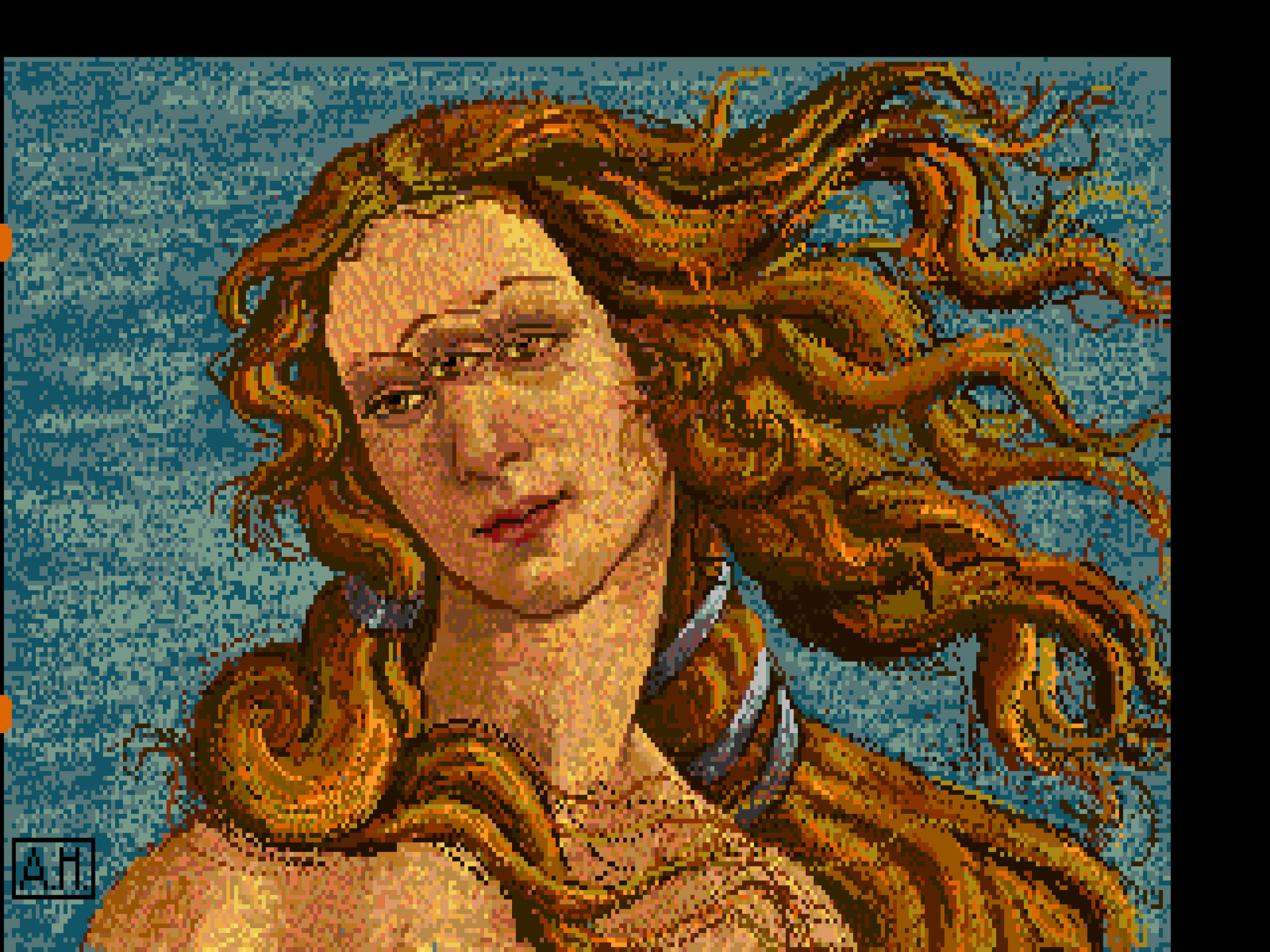
Cory Arcangel’s curiosity was piqued: he had just seen a YouTube clip of revered pop art icon Andy Warhol painting a digital portrait of Blondie singer Debbie Harry as part of a 1985 advertisement for the Commodore Amiga 1000. What had happened to the image, which was ostensibly Warhol’s first digital portrait? When Arcangel (also an artist) was in Pittsburgh — home of the Andy Warhol Museum — for his own show, he asked the museum’s curator Tina Kukielski if anything had ever come of the unlikely partnership.
As it turns out, something had.
Today, the Andy Warhol Museum announced that it has recovered a set of images that the pop artist created on the Commodore Amiga home computer that he was promoting in the ad campaign. The doodles and photos were the result of a commission by Commodore International hoping to demonstrate the computer’s graphic arts capabilities. The images that Warhol created — including revisiting his iconic Campbell’s soup cans, bananas and Marilyn Monroe — were then stranded on Amiga floppy disks for almost twenty years after technology progressed past the point of being able to easily retrieve them.
Together Arcangel and Kukielski approached the Warhol Museum’s chief archivist Matt Wrbican to ask for permission to search for the lost files on the floppy disks held in the archives. Wribcan joined the hunt, which soon grew to include other staff from the museum and Carnegie Mellon University’s Computer Club — a group, as the Warhol Museum notes in a press release, that is known for its collection of “obsolete computer hardware” and its “prize-winning retro-computing software development.”
The club’s technical expertise paired with the museum’s collection allowed the hunt for the lost images to continue. Eventually, the team was able to safely extract the images from the disks resulting in new images for Warhol fans and art historians to appreciate while also making it possible to preserve the images for posterity. (It’s unlikely that Warhol backed up his work.)
The images that the team discovered are familiar territory for Warhol fans: There’s a colorful recreation of his world-famous Campbell’s soup can; a three-eyed adaptation of a pre-rendered version of Botticelli’s The Birth of Venus and a scratchy self-portrait. But he new images — as well as the YouTube advertisement that started the treasure hunt — show an established artist in a state of evolution, attempting to adapt his usual mode of creation to working with a mouse in his hand. Warhol didn’t shy away from the new technology, but instead seemed determined to master it.
As director of the Warhol Museum Eric Shiner explains, Warhol remained interested in new technology throughout his life. “Warhol saw no limits to his art practice. These computer generated images underscore his spirit of experimentation and his willingness to embrace new media.” One can only imagine what Warhol’s Instagram would have looked like.



More Must-Reads from TIME
- Why Trump’s Message Worked on Latino Men
- What Trump’s Win Could Mean for Housing
- The 100 Must-Read Books of 2024
- Sleep Doctors Share the 1 Tip That’s Changed Their Lives
- Column: Let’s Bring Back Romance
- What It’s Like to Have Long COVID As a Kid
- FX’s Say Nothing Is the Must-Watch Political Thriller of 2024
- Merle Bombardieri Is Helping People Make the Baby Decision
Contact us at letters@time.com